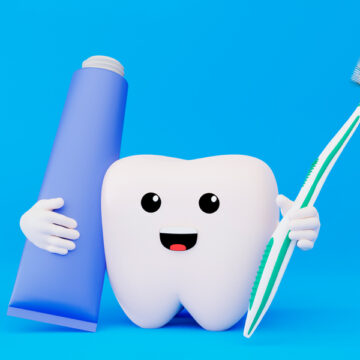Pediatric Dental Crowns for Kids
If you’re looking for an experienced crown dentist for kids, you have come to the right place. The dental staff at Bay Area Kids Dentist has several years of combined experience preparing and placing crowns for kids. We know that this procedure is a bit more extensive than routine cleaning, so we take extra time with your child to ensure that he or she understands what we are about to do. Our dentists and hygienists also explain why a dental crown is necessary in terms that kids can understand. This includes using simplified language and comparisons to everyday events, such as wearing a hat to guard against sun damage.
Pediatric Crowns on Baby Teeth
When your child’s baby tooth has extensive decay, a traditional filling is insufficient to protect it from further erosion by bacteria as well as breaks or fractures. When this occurs, your child’s dentist creates a prefabricated kids’ dental crown that goes over the tooth. The type of crown depends on the location of the tooth with the decay. For baby molars, we typically use stainless steel material to cover teeth at the very back of your child’s mouth. We also use silver dental caps after your child has had nerve treatment performed.
Stainless Steel Crowns for Kids
Our dentists use this material whenever possible because of its durability. Since the molar teeth are essential for chewing, they are subject to more pressure than the front teeth. If your child tends to clench his or her teeth or often chews ice cubes or hard foods, the back teeth need to remain especially strong. Since these pediatric crowns are in the back of the mouth, they remain hidden to others. Eventually, both the primary tooth and the crown will fall out and be replaced by a permanent adult molar.
Tooth Colored Crowns for Kids
For extensive tooth decay on a front tooth, our dental team uses composite crowns constructed from white filling material. These tooth-colored crowns blend in well with the surrounding teeth so your child doesn’t have to feel self-conscious about his or her smile. Because white fillings are less durable than silver ones, it’s essential to help your child take care of them properly. They are prone to staining, breaking, and fracturing over time, but diligence on your part will help dental crowns on the front teeth last as long as possible.
Work with a Dentist Who Gets Kids
As an adult, you have probably visited the dentist several times in your life. You know what to expect and understand that cooperating with the dentist and hygienist benefits you. Children don’t have the benefit of this experience. Everything is new to them, including having someone they don’t know look inside their mouth. When treatment beyond a routine cleaning is necessary, kids may feel even more frightened of going to the dentist. At Bay Area Kids Dentist, we tailor our approach to each child’s age, personality, and any special needs. We know from experience that gaining a child’s trust is more important than rushing through an important procedure.
Problems We Treat
- Emergency Tooth Extraction
- Severe Toothache
- Loose or Dislodged Tooth
- Bleeding Gums
- Knocked Out Tooth
- Infection or Swelling in the Mouth
- Jaw Pain
- Chipped or Cracked Tooth
FAQs
Start brushing as soon as the very first tooth appears, usually around 6 months. Utilize a soft-bristled toothbrush and a tiny smear of fluoride toothpaste.
Help your child brush their teeth twice a day with fluoride toothpaste, limit sugary snacks and drinks, and visit the dentist periodically for cleanings and check-ups.
Watch for signs such as tooth pain, sensitivity to very hot or cold temperatures, visible holes, or dark spots. Regular dental visits help catch cavities early.
Untreated cavities may lead to pain, infection, and may affect how adult teeth come in. It’s important to treat them, even in baby teeth.
It could be a cavity, tooth injury, gum infection, or something stuck between the teeth. A dental checkup can find the cause.
Sudden pain may be caused by a cavity, a cracked tooth, an abscess, or even sinus pressure. It’s best to have a dentist examine it.
Most babies get their first tooth between 6 to 10 months, starting with the lower front teeth.
Bleeding gums can be caused due to brushing too hard, plaque buildup, or the early stages of gum disease. Ensure your child brushes their teeth gently and regularly.
Persistent bad breath can indicate poor brushing, cavities, gum issues, dry mouth, or even allergies. A dental checkup can help find the reason.
Thumb-sucking is normal in babies, but it can affect tooth alignment if it continues past age 4. Consult your dentist if you are concerned.
If it’s a baby tooth, don’t try to put it back—call us for advice. If it’s a permanent tooth, gently rinse it and try to place it back in the socket or in milk, and come to the dentist right away.
Nighttime grinding (bruxism) is common in kids and can be caused due to stress, misaligned teeth, or sleep issues. We can evaluate if treatment is needed.
Sugary snacks, sticky candies, soda, and even dried fruits can lead to cavities. Encourage water, fruits, and crunchy veggies instead.
Not always, but it can be an early sign of gum disease or poor oral hygiene. Regular brushing and checkups help keep gums healthy.
Many kids start orthodontic evaluation around age 7. Early checks help plan for braces if needed.
Yes, but only for kids over age 6 who can spit it out. Choose child-friendly mouthwashes with fluoride.



















